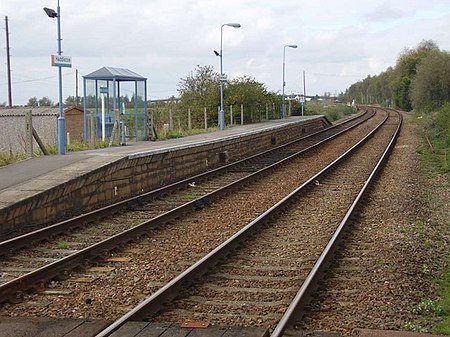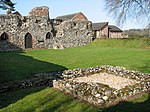Haddiscoe railway station
DfT Category F2 stationsFormer Great Eastern Railway stationsGreater Anglia franchise railway stationsPages with no open date in Infobox stationRailway stations in Great Britain opened in 1904 ... and 2 more
Railway stations in NorfolkUse British English from December 2017

Haddiscoe railway station (formerly Haddiscoe Low Level) is on the Wherry Lines in Norfolk, England, named after the village of Haddiscoe, some 2 miles (3.2 km) distant, although the village of St Olaves on the other side of the River Waveney is closer.[1] It is 16 miles 11 chains (26 km) down the line from Norwich on the route to Lowestoft and is situated between Reedham and Somerleyton. Its three-letter station code is HAD. It is managed by Greater Anglia, which also operates all trains serving the station. Haddiscoe station is remote, positioned as it is at the end of a minor road, though it does have a car park.
Excerpt from the Wikipedia article Haddiscoe railway station (License: CC BY-SA 3.0, Authors, Images).Haddiscoe railway station
Station Road, South Norfolk
Geographical coordinates (GPS) Address Nearby Places Show on map
Geographical coordinates (GPS)
| Latitude | Longitude |
|---|---|
| N 52.52887 ° | E 1.62239 ° |
Address
Station Road
Station Road
NR31 9JA South Norfolk
England, United Kingdom
Open on Google Maps









